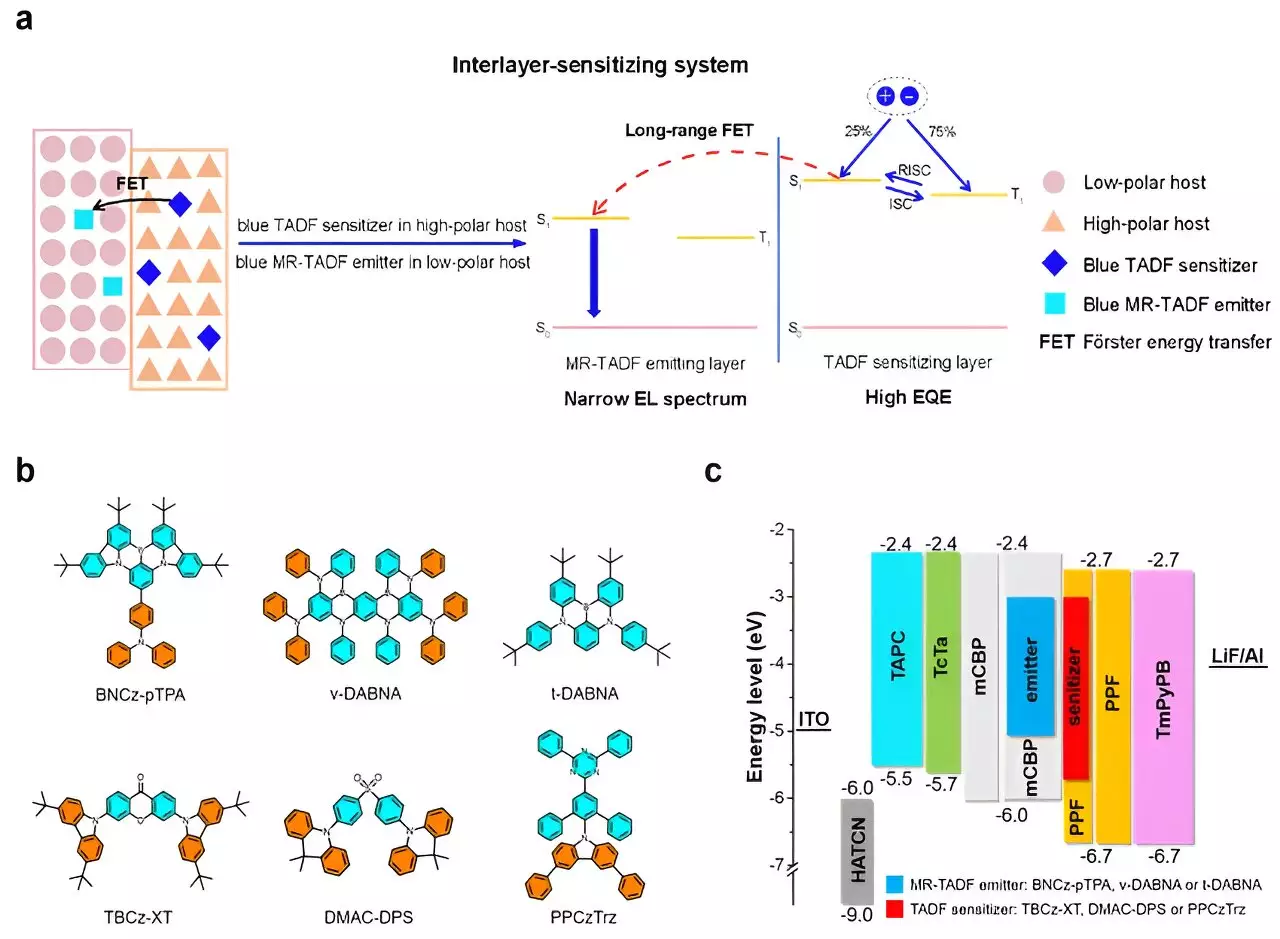Multi-resonance thermally activated delayed fluorescence (MR-TADF) materials have shown potential in the development of organic light-emitting diodes (OLEDs) with narrow electroluminescence (EL) spectra. However, the efficiency of blue MR-TADF emitters has been limited by triplet-involved quenching processes. In response to this challenge, scientists in China have proposed an interlayer sensitization strategy to enhance the EL efficiencies of blue MR-TADF emitters.
The Interlayer Sensitization Strategy
In a recent study published in Light Science & Applications, Professor Zujin Zhao and a team of researchers from South China University of Technology developed an effective interlayer sensitization strategy for blue MR-TADF emitters. This approach involves separating the TADF sensitizer and MR-TADF emitter into two adjacent emitting layers (EMLs) with different hosts. By utilizing long-range Förster energy transfer (FET), the TADF sensitizer can sensitized the MR-TADF emitter, leading to improved performance in OLEDs.
Experimental Results
The researchers were able to fabricate high-performance hyperfluorescence OLEDs using the interlayer sensitization strategy. By incorporating different blue MR-TADF emitters and TADF sensitizers, they achieved strong blue light emission with narrow EL spectra. Furthermore, the devices demonstrated outstanding external quantum efficiencies (EQEs) of up to 38.8%, a significant improvement compared to unsensitized devices.
The results of this study highlight the potential of interlayer sensitization for optimizing blue MR-TADF emitters in OLEDs. By effectively separating the TADF sensitizer and MR-TADF emitter into distinct layers, researchers were able to overcome the limitations of traditional sensitization strategies. This approach offers a promising avenue for the development of high-performance blue hyperfluorescence OLEDs with enhanced EL efficiency and color purity.



Leave a Reply